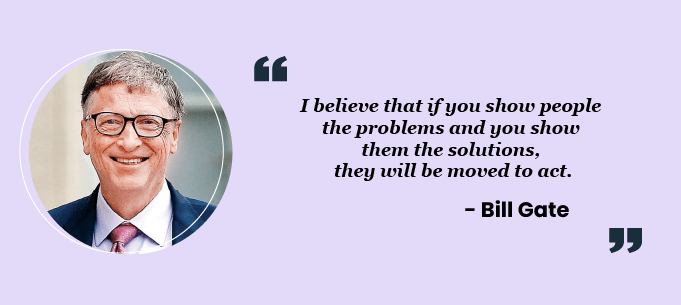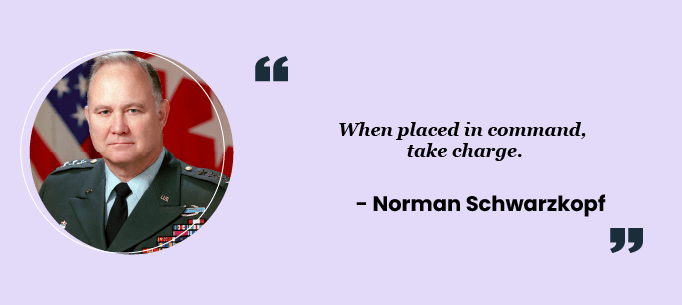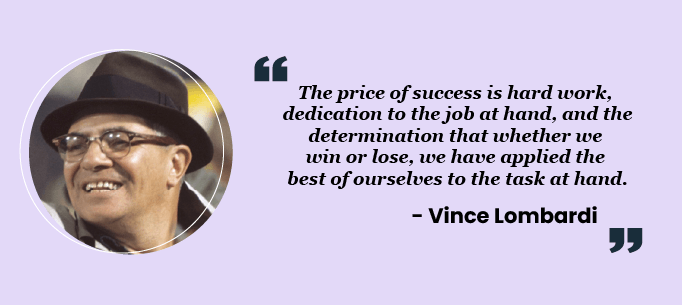What is Transactional Leadership? Is it still effective?
There are several leadership styles that coexist. One such efficient approach to leadership is transactional leadership. But the question is, what type will suit you and the organization the best?
Different types of leaders from diverse fields follow varied leadership styles. Choosing a leadership style is a personal approach.
In this article, we will be focusing on the transactional style. This type is commonly known as the managerial leadership style.
Most leaders use a mix of different leadership styles depending on the situation.
As a leader, what factors would you consider before adopting a particular leadership style? Would you also think of the intrapersonal aspect?
That answer relies on what is most suitable for your business and you.
- What is Transactional Leadership Style?
- What are the Characteristics of Transactional Leadership?
- What are the Pros And Cons of Transactional Leaders?
- Transactional Leadership Theory.
- How Transactional Style Affects Employee Performance?
- Is Transactional Style still relevant?
- Examples of Transactional Leadership.
- How does Transactional Style Compare?
- How Do You Become An Effective Transactional Leader?
- Final Takeaway
What is Transactional Leadership Style?
Transactional leadership is a type of leadership style that focuses on supervision, organization, and employee performance. To motivate employees, these types of leaders use rewards and penalties as an exchange to keep them on track.
Think of it as a transaction that we make when we want to buy something. Like for instance, you go to a shop, and you choose to buy a product. What do you do?

You must pay the shopkeeper to receive the item you want to buy.
It is the same for Transactional Leaders.
These leaders believe in an exchange deal with the employees. To motivate employees, transactional leaders use a system of rewards and penalties. You get penalized if you do not perform well or do not abide by the rules and regulations. This leadership style works best during crisis management.
This leadership style lacks creativity and problem-solving skills. Due to this drawback, it creates rigidity and inflexibility in organizations. This leadership style emphasizes supervision, organization, and methodical approaches.
The history of this leadership theory started back in the 20th century. It was first introduced by a German sociologist named Max Weber in 1947.
This leadership theory was earlier known as Rational-Legal leadership.
This style believes in the idea of an exchange between the follower and the leader. For effective management and workforce outcomes, theorists believe in mixing different leadership styles.
The most popular leadership mixing combination of this style is with Transformational leadership.
What are the Characteristics of Transactional Leadership?

1. Extrinsic motivation
Transactional leaders are self-serving. They believe in Extrinsic motivation and contingent rewards. Hence, they use incentives to inspire employees and reprimand them for poor performance.
2. Directive
To keep employees on track, these kinds of leaders set clear goals and predefined workflows. These workflows also include strict policies, guidelines, rules, and regulations.
3. Resistant to change
They are not open to innovation, change, or transformations. They tend to think inside the box to solve problems. Hence, great for routine affairs and not for creative solutions.
4. Passive
Transactional Leaders provide constructive feedback to each employee on their performance. They focus on maintaining the status quo.
These leaders also pay close attention to details, deviations, irregularities, and mistakes. They do not take proactive steps to prevent anything. Hence, these leadership styles are best for achieving short-term goals.
5. Emphasis on self-interest
Transactional leaders do not focus on employee emotions, values, or identities. These leaders aim for efficient and productive results for the organization. Productivity and goal attainment are the primary aims for these leaders.
6. Emphasis on hierarchy
These leaders give much importance to corporate structure. Hence, they complement a rigid organizational structure.
7. Practicality
These leaders are practical and take realistic constraints into account. Due to this nature, they are efficient and can act immediately during crises.
8. Discourage independent thinking
They do not encourage employees to be creative or to take risky actions. They value straight, clear, transparent communications and loyalty.

What are the Pros and Cons of Transactional Leaders?
Organizations with rigid structures need Transactional leaders to operate efficiently. However, for companies that require creativity and innovation, this is not the best leadership approach.

Advantages of Transactional Leaders
- Sense of fairness
- Systematic and easy-to-understand system
- Employee motivation.
- Achievable short term goals
- Crisis Management
- Clear structure
- Productivity and cost
- Change leaders
Disadvantages of Transactional Leaders
- Discourage innovation and creativity
- Lack of focus on building relationships
- Motivate only through rewards
- Discourage independent thinking
- Lacks Long term goals
- Inflexible
- No scope of further development
Transactional Leadership Theory.
In 1947, German sociologist Max Weber made an extensive study of leadership styles. He divided these styles into three categories—traditional, charismatic and rational-legal, or bureaucratic.
The rational-legal style later came to be known as the Transactional style.
This theory believes that employees are not self-motivated. They need structure, monitoring, and instructions to complete tasks.
Transactional Leadership theory is based upon the idea that managers give employees something in return to get something they want from them.
The government during World War II was concentrating on rebuilding. They needed a high level of structure maintenance. Hence, this style was prominent in the U.S. during this time.
James McGregor Burns in 1978 wrote a book on the theory of leadership - "Leadership". It supported Weber's theories. Burns is one of the most prominent authors to advance Weber's ideas.
Bernard M. Bass, Jane Howell, and Bruce Avolio, in the 1980s and 90s, defined many other dimensions of this Leadership theory.
Douglas McGregor Theory X Theory Y also compares this leadership style.
Theory X is compared with Transactional Leadership Theory, where managers need to rule by fear and consequences. Employees are motivated through incentives, and hostile behavior is punished.
Theory Y is compared with Transformational Leadership
How Transactional Style Affects Employee performance?

Productive performance and efficiency are the prime focus of transactional leaders. Such leaders aim to produce a satisfactory performance. But, employee performance levels can get affected both positively or negatively.

The effect of this leadership style employee performance depends on how the employee assesses this style. The impact of this leadership approach can be very positive and effective.
Transactional leaders’ are direct, transparent, and have directive traits. These traits create order and cut the sense of biases among employees. An employee is aware of what the organization expects from them.
Traits like these help to create harmony and success in the organization. Clear goals, motivations, and rewards help boost employee performance. Transactional leaders can also be incredibly efficient in times of crisis, such as the Covid-19 pandemic.
“If you don’t create a great, rewarding place for people to work, they won’t do great work” - Ari Weinzweig.
However, there are some obvious cons. These leaders only focus on productivity and outcome but not on employee engagement. An employee might consider a Transactional leader to be rigid and harsh. It might drastically affect the employee’s performance.
Is Transactional Style still relevant?
To prosper in modern times, creativity and collaboration are vital to businesses. Whereas, Transactional Leaders are rigid and inflexible. So can this leadership style still be relevant in 2024?
Let’s answer this question with an example. Imagine you are a leader, and there is a fire at your establishment. Would you want to act immediately? Or would you follow guidelines and wait for new ways to solve the problem?
Transactional leaders play an essential role in such situations. This type of leader is ideal for making quick decisions and actions due to their goal of following rules. These kinds of leaders help organizations to handle risk and panic among employees.
“It is not knowing what to do, it’s doing what you know.”- Tony Robbins
1. During Crisis-Management
There are many such examples where this type of leader is best suited. For instance, During the initial days of the Covid-19 pandemic, businesses couldn’t run efficiently.
Productivity and efficiency of businesses declined around the globe. Companies started adopting digitalization at an accelerated rate which made employees confused. They became unaware of what the organization was expecting from them. During this time, this style of leadership boomed.

Adoption of this style gave employees a defined way to succeed and meet business goals. Although this leadership style is traditional, it is very effective in such situations.
Check out leadership expert Amy C. Edmondson as she provides clear advice and examples to help any leader rise to the occasion.
2. At Manufacturing Units and Factories
Companies with routine and repetitive jobs use this leadership style E.g. Manufacturing units and factories.
Most Global organizations install diversity and inclusion programs. These programs help to maintain diversity in the organization.
Diversity refers to the traits and characteristics that people are unique. Inclusion, on the other hand, refers to organizational behaviors and social norms. These can be maintained through fixed operating ways. These working ways are supported through Transactional leaders.

3. In the Sales Industry
The sales industry uses this leadership approach where there are employee targets. Employees get rewards, perks, and benefits if they achieve the expected targets. They get penalized for improper performance.
Examples of Transactional Leadership.
For linear and specific process projects, Transactional leaders are best. Many industry giants and big corporations use this style of management. Some famous examples are Hewlett-Packard and Starbucks.
Many high-level military members, multinational company CEOs, NFL Coaches, and Policing agents, use this leadership style. Can you guess any name of a famous Transactional Leader?
1. Bill Gates
I guess we all know Bill Gates (Born - October 28, 1955, Seattle, Washington, U.S.). Bill Gates is the co-founder of Microsoft. He is a billionaire known as a computer tycoon and a predictor of future technology. He is the mastermind behind Microsoft’s success.
In 1975, Gates and Paul Allen started Microsoft, and by 1978 when Gates was 23, the company had grossed $2.5 million. Bill Gates is known as the richest man in the world. He is also known as an influential leader who transformed the whole world.
From 1975 to 2006, he was looking after Microsoft’s product strategy. Gates presents himself as strict and mighty in front of his rivals and subordinates.
As a Transactional leader, Gates is not adaptive to communication and employee engagement. To keep track of his team, Gates visits them and asks challenging questions. He keeps asking until he is satisfied. Some even refer to him to be dismissive of others’ ideas.
Bill Gates has demonstrated the importance of clarity of thought and execution for nearly 30 years now.

2. Norman Schwarzkopf
Herbert Norman Schwarzkopf Jr. was born on 22 August 1934 in Trenton, New Jersey. He died on 27 December 2012 in Tampa, Florida.
Schwarzkopf was a United States Army General. He was the commander of the military alliance behind Operation Desert Storm. The president appointed him to defeat Saddam Hussein.
Schwarzkopf served as the commander of United States Central Command. He led all coalition forces in the Gulf War.
Schwarzkopf showcased remarkable management skills. He also was the leader of military units that came from different parts of the globe. To coordinate operations on several continents, he uses rules and regulations.
Schwarzkopf believed in group performance and compliance. He demonstrated a directive style to achieve complex goals. Schwarzkopf recognized efforts making members of his team motivated.

3. Vince Lombardi
If we talk about NFL Football, one name never fails to pop up-Vince Lombardi. He was Born on 11 June 1913 in Brooklyn, New York. Died on 3 September 1970 in Washington, D.C. The legendary NFL football coach of all time.
Lombardi led the Green Bay Packers teams. They won five NFL Championships, including Super Bowls I and II. He was not only famous for his incredible coaching skills but also as an influential leader.
Lombardi is known to push his team to play the best and expect every team member to have a winning mentality. He believed every member of the team mattered. If someone did not work up to their full potential, he thought it would affect the whole team. He believed in nothing but winning.

4. Howard Schultz
As soon as you say the best coffeehouse in the world, I am sure Starbucks would be on your list. Starbucks is a multinational chain. It is the world’s largest coffeehouse chain headquartered in Seattle, Washington. This chain became a chain because of Howard Schultz (Born- 19, July 1953, Brooklyn, New York, U.S.).
Howard Schultz is an American businessman. He served as the chairman and CEO of Starbucks Coffee company from 1986 to 2000 and then from 2008 to 2017. He managed to turn a small local coffee chain into one of the most recognizable brands in the world.
Power, loyalty, staff training, consistency, employee motivation, and fringe benefits are all values that Schultz holds dear. He ranks as the 209th wealthiest person in the United States as per Forbes 2020.

How does Transactional Style Compare?

Many popular styles coexist. We can help clarify them by comparing them with the Transactional style. It will help to decide which leadership styles are most effective in various conditions.
Let us see how this approach stacks up.
Transactional leadership Vs. Transformational leadership
Transformational Leadership is one of the most popular leadership styles. Both these styles are always compared in businesses today.
-
Transformational leaders promote creativity, innovation, and out-of-the-box thinking. But, Transactional leaders believe in sticking around with existing rules and regulations.
-
Transformational Leader Behaviors include motivating and inspiring team members to do the job. Transactional leaders focus more on self-motivation and a structured environment.
-
Transformational leaders believe in influencing others. Transactional leaders believe in directing others.
Judge, Timothy A., Piccolo, Ronald F. Journal of Applied Psychology, Vol 89(5), Oct 2004, 755-768 shows a Meta-Analytic Test of their relative validity.
The Journal of Applied Psychology is a peer-reviewing academic journal published by American Psychological Association.
The Journal of Applied Psychology emphases the publication of original investigations that contribute new knowledge and understanding to fields of applied psychology.
Transactional leadership Vs. Authoritative leadership
The Authoritative leadership style is also known as the Autocratic leadership style. It resembles the Transactional style. So don’t get confused between the two, as both believe in directive measures.
-
The Authoritative leaders are rigid, strict, and self-centered. Transactional leaders aren’t as rigid as these leaders.
-
The Authoritative leaders do not believe in any kind of motivation. They do not believe in self-motivating productivity or rewards as motivation. The transactional leaders use extrinsic motivation as a tool to enhance employee performance.
Transactional leadership Vs. Charismatic leadership
Charismatic leaders make use of their personalities to influence others. This type of leader have high value as they can elevate and transform an entire company.
-
Charismatic leaders’ primary goal is to improve the organization. This type of leader somehow also want to influence everyone. The transactional leaders focus on each team member and their performance.
-
Charismatic leaders believe in creativity. This type of leader challenge the status quo, whereas Transactional leaders lack creativity and innovation.
-
Charismatic leaders become one with the group at work. Transactional leaders scrutinize individual work rather than group work in a structured environment.
How do you become an effective Transactional Leader?
“A leader is one who knows the way, goes the way and shows the way.”-John C. Maxwell
Do you want to incorporate the Transactional style into your leadership approach? If yes, then there are certain things you should keep in mind.
1. Healthy balance
This leadership style can be a little slippery if not handled with care. It can quickly give an impression of an Authoritative leader. Hence, it is necessary to maintain this balance of not being too direct. Maintaining balance requires the use of motivational tools such as rewards and required corrections.
2. Flow of operations
Smooth flow of operation is of utmost importance for such leaders. Hence, Prioritizing on the hierarchy of the organization helps achieve that. This flow helps organizations achieve the desired productivity and demand.
3. Active Management
A good Transactional leader focuses on the rules and regulations of the organization. Rules and regulations lower the chances of risk and deviations. This trait increases the productivity of the organization.
4. Organizational Format
The organizational format is the structure of the organization. It defines the direction of activities in the organization. Directed activities like task allocation, coordination, and supervision help achieve goals and objectives. An effective leader understands the importance of this structure.
5. Passive Management
Transactional leaders only intervene when someone does not meet the organizational standards. When someone under delivers, they get penalized in exchange for the unacceptable performance.
6. Short-term goals
Short-term goals are those goals that need immediate attention. An effective Transactional leader understands the need for urgency. They are hence best during crisis situations to meet organizational goals and objectives.
7. Performance Reviews
Transactional leaders review and check the performance of each member of the team. According to this evaluation, transactional leaders reward and punish employees.
8. Practicality
Transactional leaders believe in the fundamental aspects of a situation. They do not believe in theories or ideas. These leaders are generally practical and realistic.
Quick Tip: Development is the key to success for every organization. So, keep in mind to increase opportunities for leadership development. Try moving beyond productivity to develop leadership skills. The company would save a lot of money and time if it can build a leader.
Final Takeaway

The Transactional Leadership approach is an excellent style for you to implement.
It will help you achieve daily targets, short-term goals, routine jobs, and handle crises through contingent rewards. Transactional leaders follow a simple model which is easy to understand and use.
Most great leaders use a mix of the various types of leadership styles. Mixing leadership styles leads to better output.
If you want to be an effective leader, you need to acknowledge that the world keeps evolving, and so does the working landscape. You should be able to ensure that the company’s demands and the basic needs of the employees are fulfilled.
An effective leader helps to fill this gap between company and employee demands. They should be able to communicate from both sides.
An employee engagement platform is the most effective and easy way to fill this gap. Vantage Circle is a leader in this segment. Its Al-powered solutions help motivate employees in a meaningful way.
All four solutions of Vantage Circle are designed to engage your people better. These employee engagement tools let you create a culture of appreciation and productivity. These tools help you track and reward effectively.

















